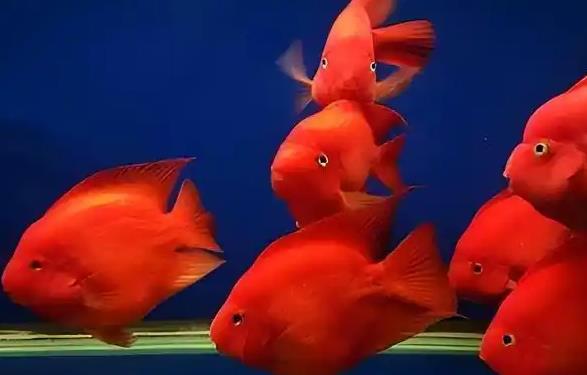The main reasons for parrot fish floating to the surface include the following:
Lack of Oxygen: Parrot fish have lips that cannot close completely, and they have poor control over the flow of water when they inhale and exhale. They have a relatively high demand for oxygen. When the dissolved oxygen in the water is insufficient, parrot fish will float to the water surface to breathe.

Parasite Infection: If the water in the fish tank is not changed for a long time or the impurities are not cleaned, bacteria and parasites in the water will multiply in large numbers, causing the parrot fish to be infected, and then they may float on the water surface.
Ammonia and Chlorine Poisoning: Tap water contains toxic substances such as ammonia and chlorine. If the water is not filtered and exposed to the sun when changing the water in the fish tank, the parrot fish may be poisoned, resulting in floating on the water surface.
Water Quality Problems: Situations such as high levels of nitrite in the water and acidosis can also affect the fish's breathing, leading to the phenomenon of the fish surfacing with its head out of the water.
Solutions:
Oxygen Supplementation: Increase the oxygen content in the water by changing the water, installing a filter or a small water pump.
Water Change: Regularly change the water in the fish tank to keep the water quality clean and inhibit the growth of bacteria and parasites.
Removing Ammonia and Chlorine: Before using tap water, leave it exposed to the air for 3 to 4 days to remove the chlorine. Also, add special medications for fish to the water to help eliminate parasites.
Reduce Feeding: Reducing feeding can lower the oxygen demand of the fish. At the same time, promptly remove the dirt and leftover fish food in the water to reduce the consumption of oxygen.
Adjust the Water Temperature: Maintain an appropriate water temperature, and avoid the water temperature being too low or too high to reduce the metabolic burden on the fish.
